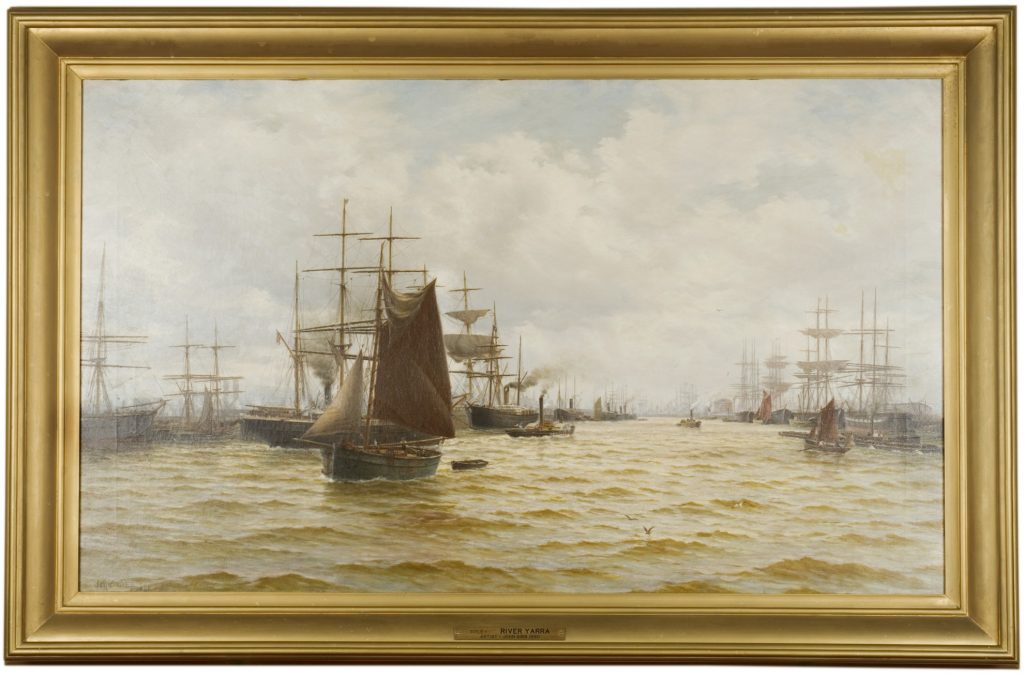Melbourne Views, Yarra River, Ships, John Gibb
Summary
Scottish-born John Gibb (1831-1909) immigrated to New Zealand with his wife and four sons in 1876. By this time, he had established a professional reputation for his works of art in West Scotland and Glasgow, exhibiting at the Royal Scottish Academy and the Royal Glasgow Institute of Fine Arts. Trained in the academy tradition, Gibb was a classic 19th-century Romantic artist, and his 'River Yarra' illustrates the Romantic belief in the sublime power of nature. Unlike Gibb's painting 'Williamstown', which is also in the collection, nature is not so much benevolent but brooding, capable of whipping up a sense of awe in the viewer. Gibb must have painted this work at the point at which the Yarra flows into Port Phillip Bay.
On his arrival in Christchurch, Gibb was one of the fledgling city's first professional artists and he soon built a reputation and a following for his works of art. His paintings were exhibited extensively, including with the Otago Society of Art, the Canterbury Society of Artists (of which he was a founding member) and at intercolonial exhibitions. His practice came to focus increasingly on marine and coastal subjects, although it also incorporated landscape works.
Two of Gibb's sons later came to Victoria, with William Menzies Gibb studying at Melbourne's National Gallery School during 1880-81. It is believed John Gibb painted 'River Yarra' and 'Williamstown' during a visit, though he and his family are thought to have spent much of the 1880s in Australia before returning to New Zealand in the early 1890s. He sold many paintings in Melbourne during the 1880s and 1890s, and several were bought by Edmund Gerald FitzGibbon, Melbourne City Council's town clerk from 1856 to 1891. This oil painting, and 'Williamstown', too, came into the collection several decades later in 1947, as a gift from the artist's grandson, Dr H.I. Gibb.
